Robot on post

How many in stories There are wars of mankind, so many warlords break their heads over how to reduce the loss of their troops. Today, there are three ways to tackle this issue: improving and strengthening remedies, creating more powerful and sophisticated samples. weapons and the exclusion of man from the very process of fighting. The latter path is realized only by the creation of automated (robotized) combat vehicles operating without human participation, both self-propelled and stationary. Such machines tried to create a long time. Suffice it to recall the walking man Leonardo da Vinci. It was a machine with a limited program of actions: moving forward, backward, bending, etc. The robot was placed in metal armor or armor.
In the XNUMXth century, with the development of science and industry, ideas about steam robots in the form of a horse and an iron man, which could be a draft force for transport carts and even participate in racing races. See the picture below.

However, progress in this matter was achieved only in the 30s. last century. In the USSR in 1929-1930 based on captured French tank Renault developed a cable-controlled design. In the years 1931-1932. already tested tank of domestic design MS-1, or TT-18. It was controlled by radio: moving at a speed of up to 4 km / h, it could execute commands “forward”, “right”, “left”, “stop”.
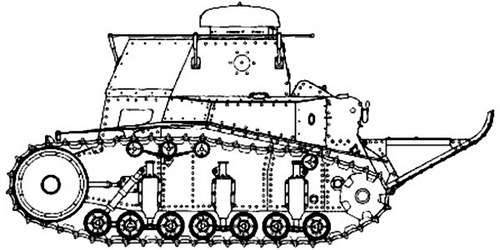
In 1934, under the cipher “Titan”, the TT-26 teletank was developed, equipped with OB triggering devices and a removable flamethrower. TT-26 tanks in 1935-1936 were released in small series (55 machines). The TT-26 teletanks were controlled from a conventional T-26 tank, equipped with control devices.
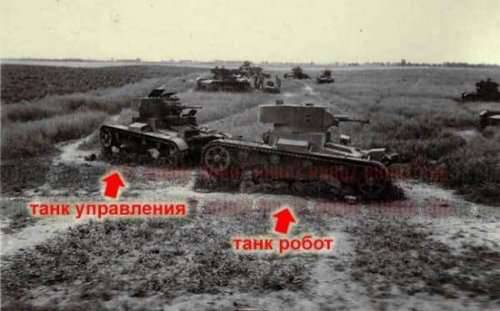
During the Second World War, Italy and Germany used remotely operated boats at the front, carrying powerful explosive charges on board.
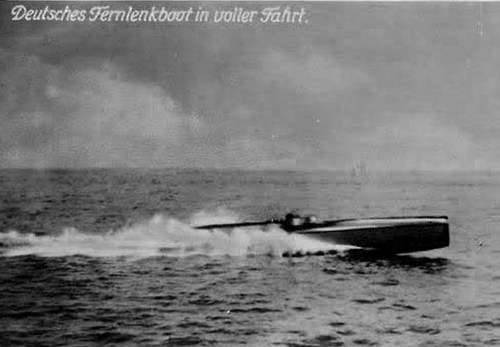
After World War II, specialists began to think about creating stationary remote-controlled installations designed to protect military and secret objects, and in the conditions of war, to cover areas of potential enemy breakthroughs. Such installations would help to organize the defense of the site with minimal forces while maintaining effective defense.
For the first time in the world, such a remotely controlled installation was adopted by the USSR in the 80s. XX century It was a remotely controlled Mius complex, equipped with a 30 mm automatic aviation grenade launcher.
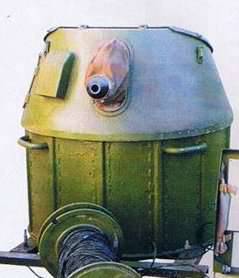
This complex was designed to equip fortified areas, roadblocks and protect objects of various purposes (airfields, military bases, sections of the state border, industrial facilities in wartime, etc.) with a significant reduction in personnel and its losses. The main method of using the complex is to create barrage fire and destroy enemy personnel.
They produced these complexes in Kazakhstan in the city of Uralsk at the Metalist plant.
Structurally, the complex consists of four 30-mm grenade launchers, control equipment with a remote control, an electrical equipment block, a wired communication line and its own direct current source. Calculation of the complex - 2 people.
The basis of the installation is a cylindrical stationary base on which the outer ring of the shoulder strap is attached. The inner movable ring of the shoulder strap is equipped with a machine with eyelets in which the carriage with a grenade launcher swings. Installation is closed on top with an aluminum cap.
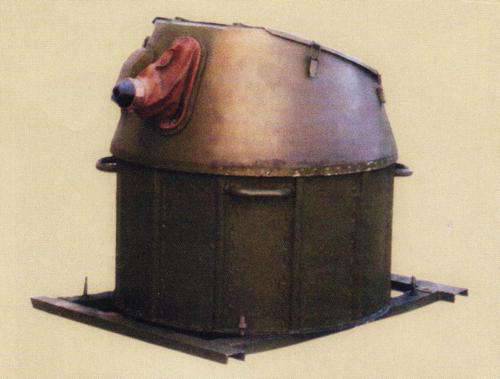
The main weapon is an aviation X-NUMX-mm grenade launcher AG-30A, the work of automation is based on the use of free rollback energy, one-sided power supply, right-hand, from a magazine using a metal tape, firing speed - 17-400 shot / min., Weight of the grenade launcher - 500 kg . A VOG-22M shot (weight 17 kg, length 0,348-130 mm, radius of a continuous defeat - 132 m) with an instantaneous fuse is used for firing. Ammunition is 7 shots.
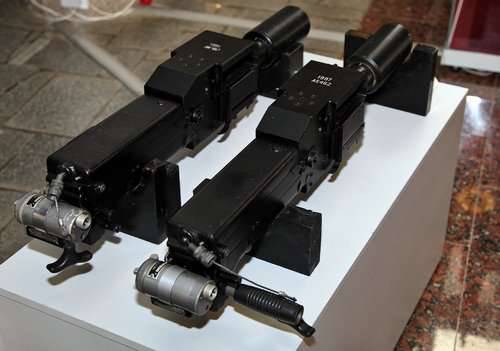
The machine also contains mechanisms for vertical (0-35 degrees) and horizontal guidance (300 degrees), guidance speeds on the horizon 5-7 degrees / s, and vertically - 0,8-1,2 degrees / s. The mechanism of horizontal guidance on commands from the control panel provides automatic dispersion in the 60 sector of hail. and shooting without scattering over the entire range of pointing angles. The mechanism of vertical guidance provides a change in firing range from 300 to 1650 m.
The main part of the control equipment is the transceiver with which the operator transmits, receives, decodes and issues control commands to the switching unit. The operator also receives data on the technical condition of the complex from the transceiver. The formation of control commands by the operator from the control panel.
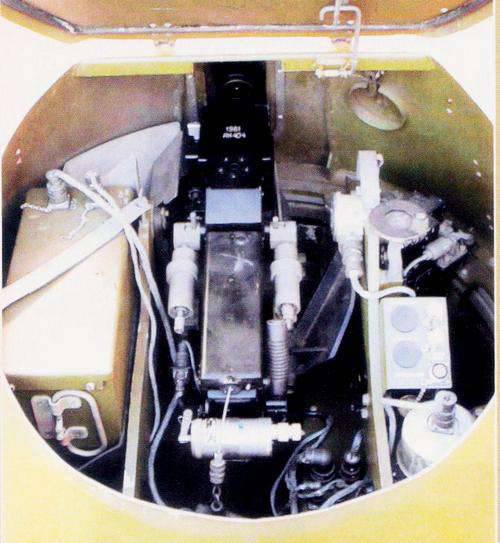
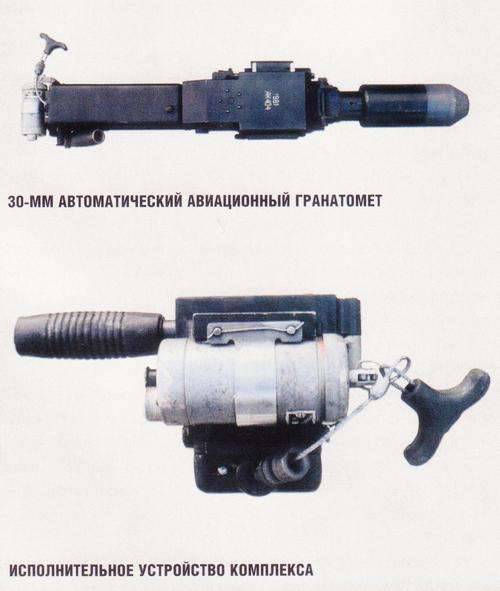
The MIUS electrical equipment includes switching units, a vertical and horizontal ignorance sensor, cables, and a power source (from 220В or five rechargeable batteries using 24В). The length of the power cable is 500 m, and the length of the communication line between the control panel and the combat vehicle is 1000 m.
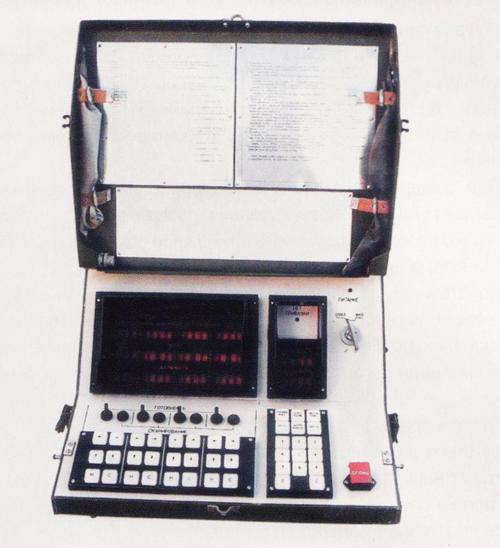
In the process of combat use of the installation, the operator drives on and off the guidance drives, the start and the cease-fire are performed by the operator, giving commands remotely from the console. Targeting can be carried out in automatic or manual modes. In semi-automatic mode, the coordinates of the complex and targets are entered into a memory device of the control panel, and calculations of the installation guidance parameters are made using them, which are transmitted to the Miusa transceiver via a communication line. The grenade launcher, from which it is planned to fire, can be selected according to the program laid down or determined by the operator.

At the combat position, the complex is placed in the trenches and fixed on the ground with special pins. Next, the base of the structure is sprinkled with earth or lined with sandbags or earth. The control point is also located in a trench, at a safe distance. In a combat situation, the operator controls the four complexes, which have the following characteristics.
Firing range - 300-1650 m.
Ammunition - 300 shots on the barrel.
Rate of Fire - 400 - 500 rds / min.
Guidance Angle:
- horizontal - 300 hail. (150 degrees. right and left, respectively);
- vertical - 0 - 35 grad.
Weight of installation without ammunition - 150-200 kg.
The weight of the control panel - 35 kg.
Combat crew - 2 people.
Unfortunately, there is no information about where such complexes are now used and whether they were used for their intended purpose.
Sources:
1. Humanoid robots, androids, droids, bots and cyborgs: history and fantasy. Part of 1 // http://d-chebatkov.livejournal.com/2419.html.
2. 11 incredible robots created long before the XX century // http://hist-etnol.livejournal.com/2645439.html.
3. Boats of Germany // http://navyworld.narod.ru/sb01.htm#FL-13.
4. TT-26 Teletank USSR // https://www.drive2.ru/c/2545372.
5. Homing machine gun // http://forum.guns.ru/forummessage/36/458026.html.
6. AGS-17. Easel automatic grenade launcher // http://vse-pro-zbroy.ucoz.ua/publ/36-1-0-113.
7. Grenade launchers // http://forums.airbase.ru/2012/08/t8350--granatomety.html.
8. http://guns.allzip.org/topic/36/458026.html.
9. http://otvaga2004.mybb.ru/viewtopic.php?id=203.
10. Robot post accepted // Weapons. 2007. No.4.
11. Encyclopedia “Weapons and Technologies of Russia. XXI Century". Tom 2. Rocket artillery ground troops. Shooting and grenade launchers. 2001.
Information